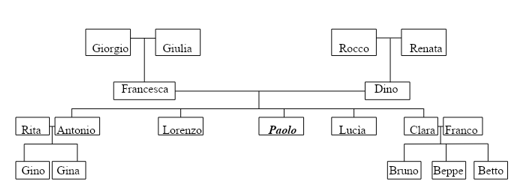Living together may be defined as two unrelated adults involved in an emotional and sexual relationship who sleep overnight in the same residence on a regular basis. Almost 4 million unmarried couples are living together. Almost half of the U.S. population in their 30s report that they have lived with someone they were not married to. Reasons for an increase of almost 600 percent in living
together since 1970 include a delay of marriage for educational or career commitments, fear of marriage, increased tolerance from society for living together, and a desire to avoid the legal entanglements of marriage. Types of livingtogether relationships include those involving partners who live together for fun (enjoy here and now), testers (test the relationship), engaged couples (plan to marry), and cohabitants forever (never plan to marry). Most people who live together eventually get married but not necessarily to each other. Most cohabitants drift into living together by progressively spending more time in one residence. They usually divide housework along traditional lines and tend to keep their money and property separate. Social policies to give benefits to domestic partners (live-ins) have been slow to evolve. Only about 10 percent of corporations provide such benefits. Advantages of cohabitation include delaying marriage, gaining information about oneself and one's partner, and being able to terminate an unsatisfactory relationship without the problems/stigma of divorce. Disadvantages include feeling exploited, feeling guilty about lying to parents, and not having the same economic benefits as those who are married. Social Security and retirement benefits are paid to spouses, not to live-in partners. Cohabitation does not ensure a happy and durable marriage. When cohabitants marry, they are more likely to divorce than individuals who did not live together before marriage. Cohabitation may draw individuals who are "norm breakers" and who are less committed to the institution of marriage. It may also provide a context for withdrawing from a conflictual relationship rather than negotiating solutions. Involvement with another person is a primary reason college student dating/cohabitation relationships end. Such an ending usually involves a face-to-face conversation that the relationship is over. Issues to consider in ending a relationship include being realistic about the potential of any relationship to meet all needs, taking the blame for why the relationship needs to end, and accepting that grieving is an important aspect of adjusting to a terminated relationship. Adjustment to a broken relationship is aided by the passage of time (particularly for women) and a new partner (particularly for men). The rate of cohabiting couples
a. has increased slightly since 1970.
b. has increased dramatically since 1970.
c. has declined in the past few years.
d. has remained nearly constant since 1970.
B
You might also like to view...
While working, Ilgunas realized that college teaches us __________.
a. to save b. to live frugally c. to be debtors d. to work out way through school
Complete the following sentences using the infinitive or the present subjunctive of the verbs given. When necessary, separate multiple answers with a comma (Example: uno, dos). Nosotros queremos ____________________ (viajar) a Madrid, pero mis padres quieren que nosotros ____________________ (ir) a Sevilla.
Fill in the blank(s) with the appropriate word(s).
Paolo crea un albero genealogico. Usa l’immagine per rispondere alle domande.
Esempio: Chi sono Giorgio, Giulia, Dino, Bruno e Gina: __parenti__

1. Chi è Gino: ___________________
2. Chi è Rocco: __________________
3. Chi è Lorenzo: ___________________
4. Chi è Franco: ___________________
5. Chi è Rita: ___________________
6. Chi è Lucìa: ___________________
7. Chi sono Francesca e Dino: ___________________
8. Chi è Gina: ___________________
9. Chi sono Bruno, Beppe e Betto: _____________________________________
10. Chi è Francesca: ______________________________________
The book mentions several questions to ask when creating a reader profile. Which of the following questions was NOT discussed in Chapter 2?
a. What is the reader’s familiarity with subject? b. What is the reader’s reading and comprehension level? c. What is the age of the reader? d. What is the reader’s professional experience?